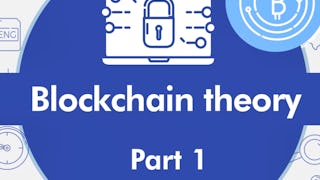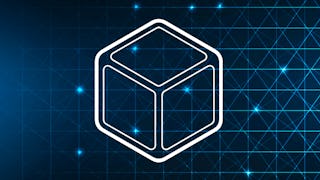Before diving into an in-depth study of blockchain and cryptocurrency technologies, this course can provide high-level explanations and practical examples that can be easily understood and applied by individuals who do not have a blockchain background. These explanations will relate to blockchain and cryptocurrency concepts and how they can be utilized in real-world scenarios.



Recommended experience
Recommended experience
Details to know

Add to your LinkedIn profile
26 assignments
See how employees at top companies are mastering in-demand skills


Earn a career certificate
Add this credential to your LinkedIn profile, resume, or CV
Share it on social media and in your performance review

There are 7 modules in this course
This module covers the background of blockchain's emergence, addresses issues in centralized systems with blockchain, and provides examples of potential uses across various industries.
What's included
4 videos4 assignments
Bitcoin : This module provides the background of Bitcoin's emergence, discusses key technologies of Bitcoin, and explains the process of Bitcoin mining and compensation. Ethereum : This module identifies the problems associated with Bitcoin and introduces Ethereum as a solution, while also comparing the two cryptocurrencies and explaining the unique characteristics of Ethereum.
What's included
5 videos5 assignments
This module provides a comparison of the characteristics between public and private blockchains, describes EOS, a third generation blockchain, compares existing blockchain platforms with Hyperledger Fabric and explains its features, and outlines the characteristics of ICON, another 3rd generation blockchain.
What's included
4 videos4 assignments
This module explains what distributed consensus means and why it is needed in blockchain. Popular consensus algorithms such as PoW, PoS, BFF and BPFT are explained and compared.
What's included
4 videos4 assignments
This module explains the meaning and characteristics of tokens, token economy, ERC standards commonly used in Ethereum, discusses the characteristics of stablecoins , and describes central government-issued CBDCs.
What's included
4 videos4 assignments
This module discusses blockchain wallets and their types, compares cryptocurrency exchanges to stock exchanges, explains centralized and decentralized exchanges, explores ICO, IEO, and STO as financing methods for blockchain projects, and provides examples of decentralized finance (DeFi).
What's included
4 videos4 assignments
What's included
1 assignment
Instructor

Recommended if you're interested in Software Development


Pohang University of Science and Technology(POSTECH)


Association of International Certified Professional Accountants


University of California, Irvine
Why people choose Coursera for their career




New to Software Development? Start here.

Open new doors with Coursera Plus
Unlimited access to 10,000+ world-class courses, hands-on projects, and job-ready certificate programs - all included in your subscription
Advance your career with an online degree
Earn a degree from world-class universities - 100% online
Join over 3,400 global companies that choose Coursera for Business
Upskill your employees to excel in the digital economy
Frequently asked questions
Access to lectures and assignments depends on your type of enrollment. If you take a course in audit mode, you will be able to see most course materials for free. To access graded assignments and to earn a Certificate, you will need to purchase the Certificate experience, during or after your audit. If you don't see the audit option:
The course may not offer an audit option. You can try a Free Trial instead, or apply for Financial Aid.
The course may offer 'Full Course, No Certificate' instead. This option lets you see all course materials, submit required assessments, and get a final grade. This also means that you will not be able to purchase a Certificate experience.
When you purchase a Certificate you get access to all course materials, including graded assignments. Upon completing the course, your electronic Certificate will be added to your Accomplishments page - from there, you can print your Certificate or add it to your LinkedIn profile. If you only want to read and view the course content, you can audit the course for free.
You will be eligible for a full refund until two weeks after your payment date, or (for courses that have just launched) until two weeks after the first session of the course begins, whichever is later. You cannot receive a refund once you’ve earned a Course Certificate, even if you complete the course within the two-week refund period. See our full refund policy.
More questions
Financial aid available,




